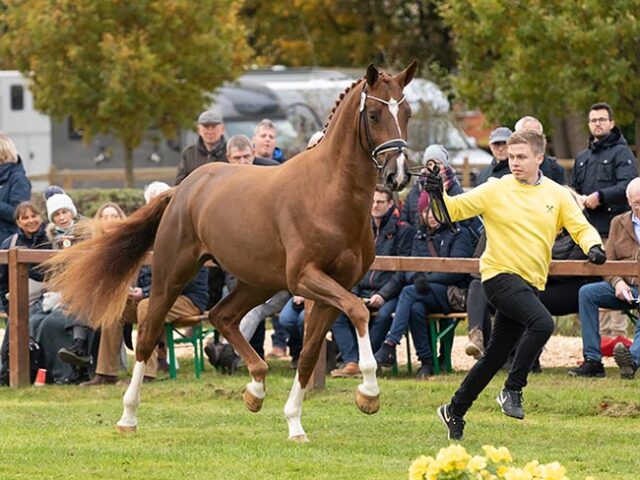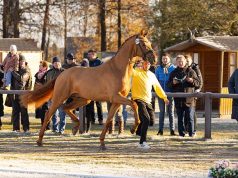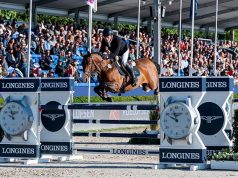By Christopher Hector
Photography: Courtesy Hannoveraner Verband
When I traveled to the Hanoverian breeding district for the first time, back in the mid 1980s, the breeders were still worshipping at the shrine of the ‘all-round horse' – or at least that was the theory. Indeed, from the very beginning it was the breeding goal.
When the Hannoveraner Studbook was founded in 1888 the breeding goal was a “medium-sized carriage horse, a strong riding horse, and a horse suitable for the troops, especially as a cuirassier horse and an artillery-pole horse.”
Dictated by other needs, the look of this horse changed. Towards the end of the 19th century, with cavalry as the primary market, more Thoroughbred blood was used to produce a finer, riding type. After WWI, with the German cavalry disbanded, the market swung to agriculture, and the elephant-model reigned supreme.
At the end of WW2, with the future in grave doubt, many mares were sent to the slaughterhouse (the number of Hanoverian mares fell from 30,000 in 1948 to 6,300 in 1963), so would the horse breeding industry survive?
Then the canny administrator Gustav Rau came up with the idea of riding clubs to encourage the sons of the farmers to compete in horse sport, and equestrian sport became the saviour of the German horse. Even then the writing was on the wall that type would follow rider demand, and as horse sports became more specialised, the breeding direction for mare owners followed.
Back in 2000, Dr. Jochen Wilkens, the breeding director at the Verband, did not give up entirely on the ‘all-round’ mantra, but obviously saw the way the wind was blowing; future breeding would be in the direction of the “careful specialisation of an all-round riding horse. The breeders are already specialising.”
It was a hot topic of discussion at a special Expo seminar week that year: ‘The Modern Sporthorse’ [sic]. There, the then deputy breeding director, Dr Ludwig Christmann, stressed the need to specialise. His paper was a study of the sires of mares invited to take part in the loose jumping and riding horse class at the Ratje-Niebuhr show, and he produced two quite different lists. The sires of the jumpers were Acord II, Calido, Contender, Continue, Crazy Classic, Dinard L, Escudo I and II, Laptop, Linaro, Metternich, Raphael, Silvio, Spartan, and Zacharias. For the riding horse class: Brentano II, Cordoba, Davignon, De Niro, Fabriano, Hohenstein, Longchamp, Prince Thatch xx, Regazzoni, Weltmeyer, White Magic and Wolkenstein II... To read the complete article you need to be a subscriber
CLICK HERE TO SUBSCRIBE TO BREEDING NEWS
SUBSCRIBERS CAN READ THE COMPLETE ARTICLE BY LOGGING IN AND RETURNING TO THIS PAGE




